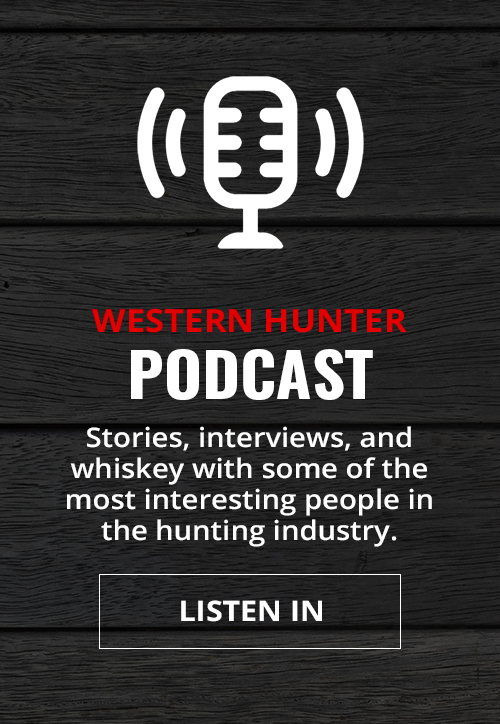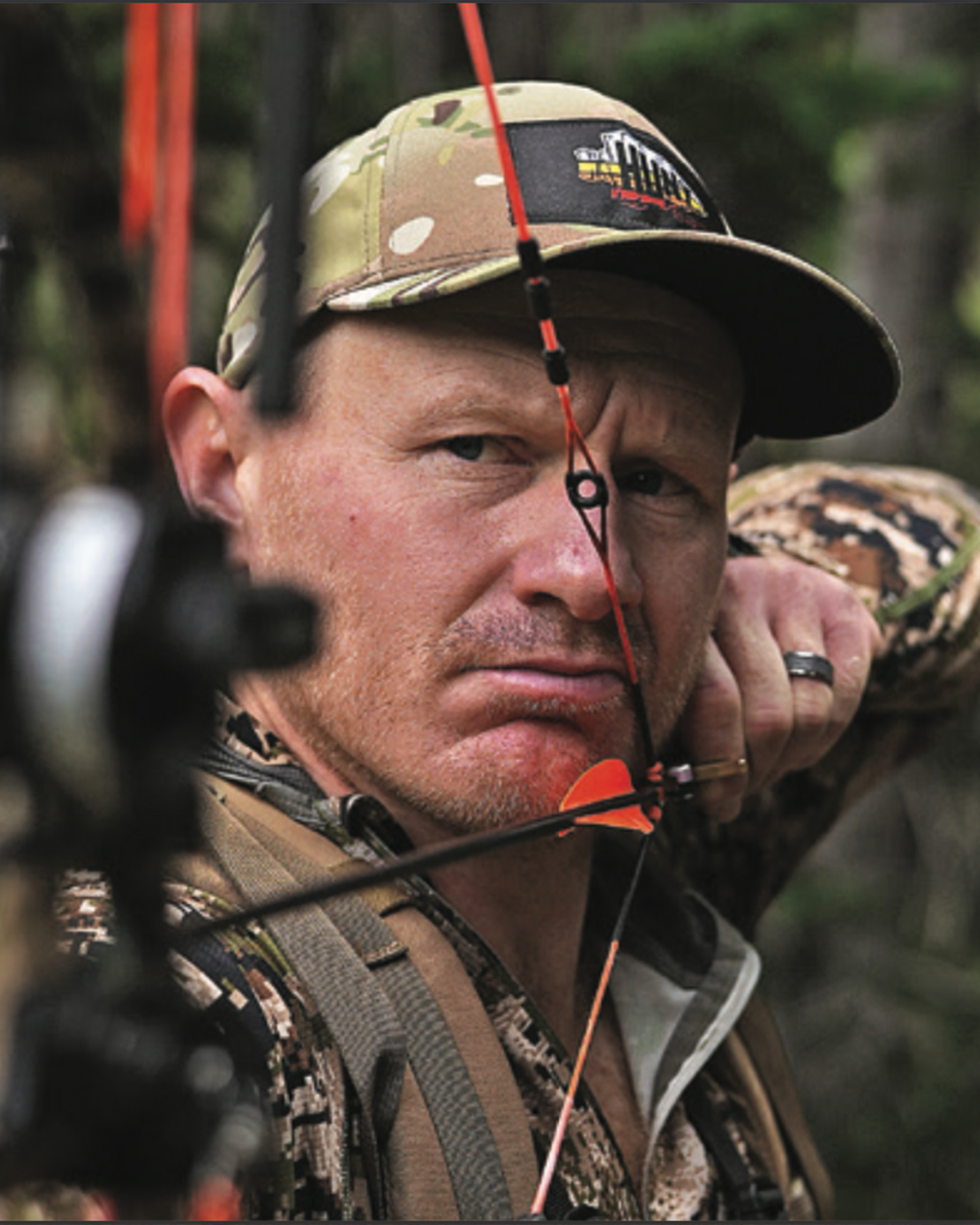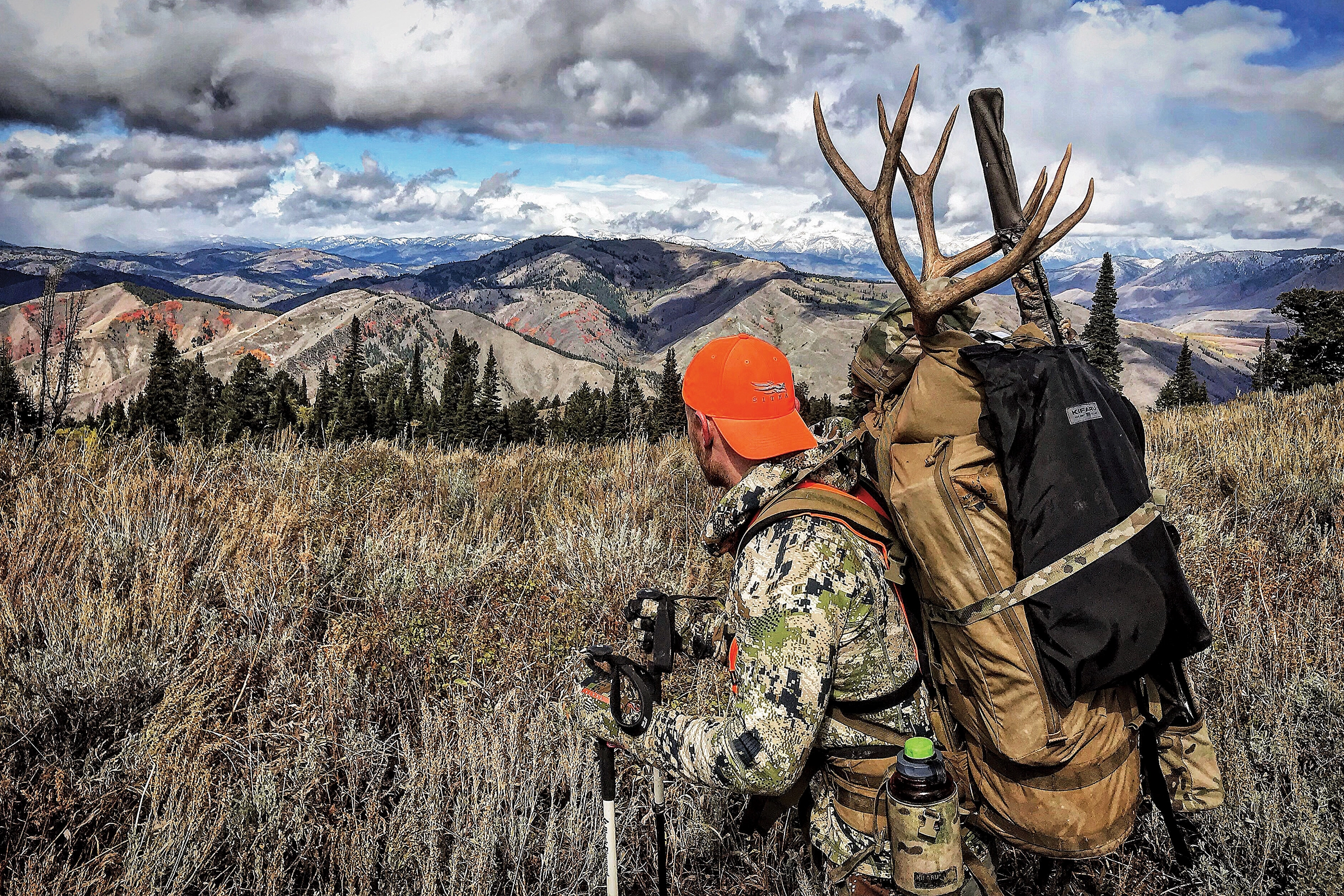
NOTICE: Certain links on this post may earn a commission for Western Hunter Magazine from Amazon or our other affiliate partners when you make a purchase. Thank you for your support.
Backcountry Passage: The Best Methods of Transit in the Wilderness
Hunt smarter not harder, right? This saying has always perplexed me because it always seems like the guys who put in the most effort (i.e. work hardest) are the most successful. In general, I work very hard on the hunts that I go on. Nearly all of the hunts that I do are OTC/general season and on public land. In all of my years of hunting, I have yet to draw a single limited-entry tag. That’s not to say that I haven’t had limited-entry-quality experiences, though. To me, the biggest difference between limited-entry tags and general/OTC tags is the amount of effort needed in order to have a good hunt. Often, the only thing that distinguishes limited-entry hunts from general hunts is the access to quality animals.
If a hunter is willing to work hard and smart, an OTC tag or easy-to-draw general tag can be every bit as good as a limited-entry hunt. The difficulty in obtaining a limited-entry tag is building points and playing the draw system for years until that coveted tag comes. We all dream of these tags and the opportunities they present, but for 99% of us, these tags come only a few times in a lifetime. I’m just not satisfied waiting for these opportunities, so I take matters into my own hands.
Hunting Motto
My hunting motto boils down to this: I’ll make my annual OTC hunts as good as limited-entry hunts by the amount of planning, execution, and hard work that I put in. So, what does “hunt smarter, not harder” mean to me? I interpret this saying not as an excuse to not put in hard work but rather that if there is a strategic way to lessen the workload on a hunt by being smarter, I’ll do it. The number one way that I have found to effectively lessen the workload on OTC hunts is the use of pack animals.
Typically, the biggest obstacle to overcome on OTC hunts is overcrowding near roads and trails. To combat this, I seek out OTC units that have extensive roadless and hard-to-access areas. The difficulty with this is the amount of effort required to get into and even more so, the amount of work required to get out of these types of areas after a successful hunt. Pack animals can be worth their weight in gold on these sorts of hunts. I have extensive experience hunting miles deep in the backcountry via backpacking, horseback/mule-packing, and llama-packing. In this article, I am going to compare these three forms of passage in the backcountry based on past experiences and explore what it means to “hunt smarter.”
Backpack Hunting
Backpack hunting is probably the purest, simplest form of backcountry hunting. The simple nature of backpacking is its strength. It requires the least amount of preparation and planning upfront but is certainly the most work-intensive form of passage in the backcountry. Planning a backpack hunt is relatively straightforward compared to a hunt with pack animals. You only need concern yourself with your own personal needs, not the needs of your pack animals.
Water Scarcity
One of the biggest considerations is water. Pack animals require water to varying degrees. If water is scarce in the area you plan to hunt, backpack hunting may be the only option. I have been backpack hunting in some pretty gnarly country where I had to carry every ounce of water on my back. This adds a tremendous amount of weight to your pack and definitely limits the length of your stay, but sometimes it’s the only option. I backpack hunt my home range in Utah for this very reason.
Despite it being wonderful mule deer habitat, there simply isn’t much water at all in the high country. There are basins in this range that would require you to drop three or four miles and over 2,000 vertical feet to get water. In order to pack in for more than a few days at a time, it’s pretty much mandatory to stash water beforehand. This isn’t a big deal for me because I live near the unit, and most every time I scout it I can stash water, but for others who don’t live near their hunting grounds, this can be an issue.
My local range in Utah isn’t the only range like this; there are ranges in Nevada, Wyoming, and Idaho that have the exact same problem. When I’m hunting any of these ranges, I make every effort to do a summer scouting trip to look for animals and, most importantly, to stash water.
Water scarcity isn’t ideal, but you’ve got to hunt where the animals are. You can use the water scarcity to your advantage, however. If water is scarce on the range, it really limits horse camps and outfitter activity. Additionally, many hunters simply aren’t willing to put in the work required to haul and stash water. If you are willing to put in the work of stashing water before your hunt, carrying a lot of water with you, or perhaps even melting snow, you can really get away from hunting pressure. As I mentioned before, the key to maximizing the quality of an OTC hunt is getting away from pressure. Putting in the additional work of stashing water is “hunting smarter.” So, in this case, working harder is “hunting smarter.”
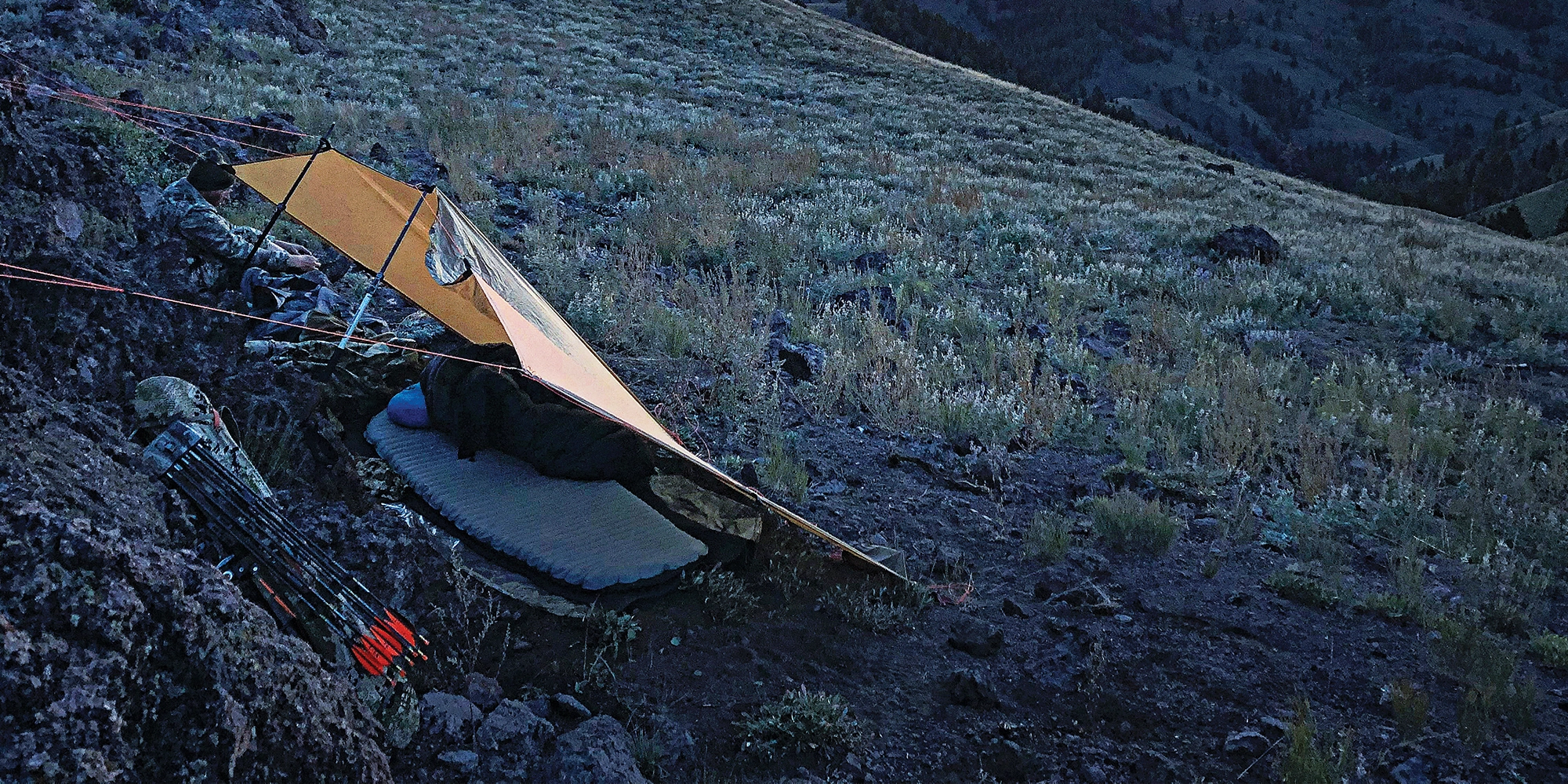
Challenges of Living Off Your Back
Backpack hunting has several challenges. You can only take with you that which you can carry on your back. Because of this, I go very barebones when I backpack hunt. I don’t take extra clothes, I don’t carry a backpacking stove (that means cold meals/no coffee), I carry water purification tablets instead of a filter, and I generally only carry a bivy, spike camp for shelter. With such a minimalist mentality, it can be hard to keep morale up, especially if the weather turns crappy.
The other obvious disadvantage is being relegated to your own strength to get your animal out after a successful hunt. This limits how deep you are able to hunt and your ability to get away from hunting pressure. Keep in mind, every trip in and out with meat is twice the distance you kill from the trailhead. If you kill a big buck five miles from the truck while on a backpack hunt, it will be 20 miles on foot to get the buck and camp out in two trips.
To be safe, I plan for two man-loads to get a big mule deer and camp off the mountain. This can be two solo trips or a single trip with two guys. For a big bull elk and a camp, you had better plan on four to six man-loads. If you are packing the bull out by yourself, this would be over 50 miles of packing! If this is an early-season hunt and the weather is warm, meat spoilage becomes a real problem.
Learning from Pain
This past October, I went on a quick backpacking overnighter to hunt OTC rifle elk. The area gets an absurd amount of pressure, so I knew beforehand I would need to get five-plus miles in and hunt some pretty rugged terrain to find success. I ended up killing a big six-point bull in the bottom of a hell hole, six miles from the truck. To make matters worse, the bull died in a nasty gorge, and to get him up, out, and back to the truck required gaining 2,600 vertical feet of elevation. It took four man-loads to get the bull out, which I spread out over a week’s time. My friend Jaron helped me on the last load, and collectively we hiked out nearly 200 pounds of the bull in that last trip.
This sort of effort is on the extreme end of what I consider possible for backpack hunting and was an endeavor I will not soon be repeating. That week of packing was so intense that I developed a significant case of Iliotibial band syndrome in my left leg that plagued me for the remainder of the 2021 hunting season. There are simply much “smarter” ways to hunt elk, six-plus miles from the truck, without destroying your body.
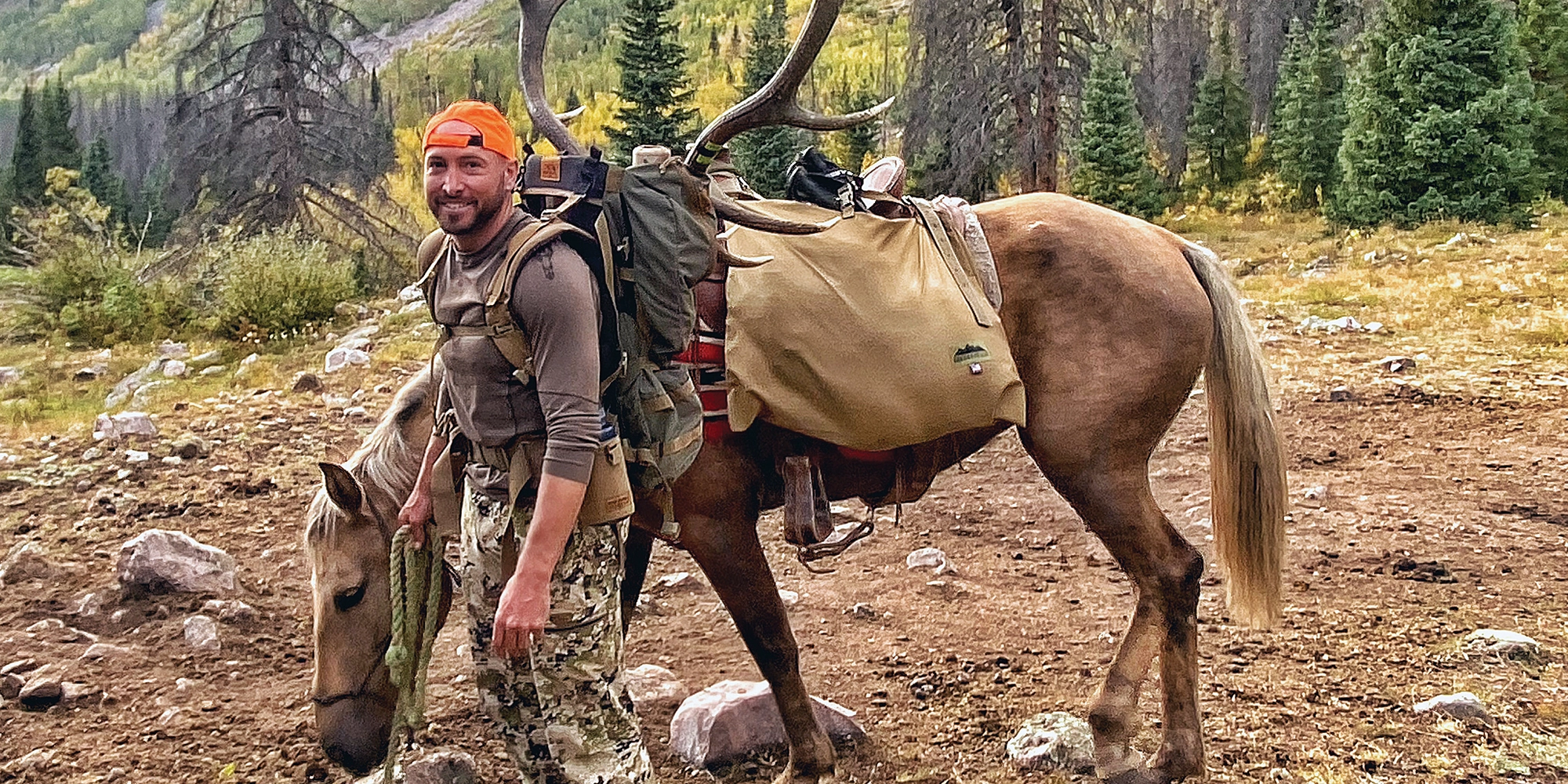
Horseback Hunting
The “smarter” way to hunt elk is to hunt closer to the road, if you can find an area with less pressure, or utilize pack animals to get in deep. Since 2015, I’ve been hunting on horseback with one of my good friends, Chris, who owns the horses. We were pretty green in 2015, making several mistakes, but we’ve kept with it every year since then and have become quite seasoned. I am by no means an expert, and the intent of this article is to give a nonprofessional comparison of these forms of passage without any biases.
Over the last seven seasons, we’ve hunted mostly the Wyoming and Colorado high country on horseback. We did our biggest horseback adventure to date in 2020. That year, we set off on a 10-day adventure, covering over 50 miles on the horses. We did a big loop through three prominent river drainages and established three basecamps throughout those 10 days. From those basecamps, we would go on day hunts and overnight spike hunts without the horses. I am going to use this hunt to showcase the major advantages and disadvantages of horseback hunting.
The area we hunted has very difficult access because of its extensive wilderness area and deep-canyon gorges. Because of the difficult access, this unit often goes undersubscribed in the draw, and tags are usually available in the second draw and leftover list. First and foremost, this hunt would not have been remotely possible without horses. We simply had to cover too many miles to get to the prime hunting areas. Our first basecamp was 17 miles from our origin, the second was 22 miles, and the third was 27 miles. There were four of us on this trip, and we each had deer and elk tags. So, we had to have the ability to pack a lot of meat a lot of miles, which is the obvious BIG advantage of horseback hunting.
Easy Going Until It Wasn’t
As we progressed up the trail on the first day of the trip, we all rode and covered ground quickly, which was absolutely fantastic because we were conserving our legs and energy. We did 14 miles like it was nothing. Then, the last three miles were a major chore. Trail conditions deteriorated with several rocky sections and lots of timber blowdown over the trail. It would have been a trivial section to hike through, but with the horses, it was very difficult.
We couldn’t simply walk around the blowdown because of the technical nature of the area. We had to cut a lot of it out as we slowly progressed up the trail. There were a couple of areas where we even had to unload the pack mules for them to squeeze through some tight spaces. We were hoping to establish our first base camp at mile 20, but because of this big slow down, we stopped short and set up our first camp at mile 17. This is the first disadvantage of horseback hunting. Trail conditions need to be pretty darn good for smooth passage. Nevertheless, we did make it to our first camp with fresh legs to hunt the next day, which is a major advantage of horseback hunting.
Beware of Trail Rodeos
By day four, we had killed one bull and a buck and we were ready to move. Two of our partners were day hunting down the ridge toward our new camp, so Chris and I led the entire pack string down the trail to meet up with them that night. This section of trail was relatively good, but because of the bigger pack string (fewer riders) and antlers, we had a pretty bad rodeo at a steep river crossing. No one got hurt, thankfully, but one of the horses cut up its shin pretty badly. That’s disadvantage number two.
You’ve got to be prepared for a trail rodeo at any time, and because horses are much bigger than you, trail rodeos can be dangerous and intimidating. Unfortunately for us, back in 2015 we had a similar rodeo on a washed-out section of trail and ended up losing a horse that trip. Because of this experience, trail rodeos are always nagging in the back of my mind, which leads to a general uneasiness that I experience when I horseback hunt in new, rugged areas.
On day seven of this hunt, I killed a fantastic six-point bull. We now had three animals down; two big, six-point bulls and a mature buck. We had 600 lb of boned-out meat, and we were 27 miles from our origin trailhead and 17 miles from our destination trailhead. That’s an absurd amount of weight and distance to cover. As I said before, this hunt simply wouldn’t have been possible without the horses.
Basecamp Chores
Horses and mules are like mischievous two-year-olds by nature. If you give them an inch, they are going to get into trouble. Because of this, horseback hunting requires a lot more basecamp work than backpack hunting. Firstly, you are more limited where you can camp; you’ve got to have water, feed, and an area to set up a highline. To prevent horses from getting into trouble and hurting themselves, they need to be highlined during the night and while you are away hunting during the day.
This means that you’ve got to get up earlier to allow them time to feed before you leave in the morning, and you are generally up later at night, allowing them time to feed and water when you get back to camp. Generally, I have found I get less sleep on horseback hunts compared to backpack hunts, and sleep while hunting is nothing to be taken lightly.
Creature Comforts
I mentioned before that it can be hard to keep morale up on a long hunt when hunting off your back. By hunting on horseback you can afford to carry “creature comforts” that really make a long, difficult hunt more mentally manageable. 90% of hunting is mental, so having that mental edge throughout the entire hunt is a critical advantage. Chris and I have never hunted with a big mule pack string, so we have never had all the luxuries of a big outfitter-style camp, but we have been able to pack a few extra “creature comforts” to really help make the hunt more comfortable.
One of the “creature comforts” that I regularly carry is a more comfortable sleep system. I take a lightweight-backpacking cot; a bigger, more comfortable inflatable pad; an inflatable backpacking pillow; and a more comfortably cut, zero-degree down bag. (Even if it’s expected to be really cold on backpack hunts, I typically only carry a 15-degree bag and just plan to layer down garments if it gets really cold). It’s amazing how much this sleep system improves my mental health on long, drawn-out hunts compared to my minimalist backpacking sleep system.
I consider my shelter a critical “creature comfort,” as well. On backpack hunts, I typically carry a tarp or small ultralight tent if the weather is expected to be really bad. On horseback hunts, I upgrade my shelter to a Kifaru 12-man tipi and a collapsible box stove. This shelter is a monumental improvement, primarily because it’s heated. A heated shelter, especially as the fall progresses, is an absolute game-changer. The heated Kifaru tipi is a shining beacon of hope after a long day, miles deep in the backcountry. To be able to get back to camp, light a fire, warm your core, dry out your gear, and then have that fire invite you out of your sleeping bag in the morning is truly game-changing.
Beyond being heated, the tipi is a great advantage because it allows for the bigger more comfortable bed described above; allows you to stand up inside; and promotes better livability. It also provides extra room to cook inside, keep your gear inside, and comfortably weather out storms (highly important if the weather is bad for consecutive days).
Beyond the sleep system and shelter, I carry an extra set of clothes, underwear, and socks. I also carry more food and food that is more palatable. On backpacking hunts, I only carry food that has more than 120 calories per ounce (mostly nuts, energy bars, and Snickers bars). This type of food can get boring really quickly. On horseback hunts, I don’t worry about the calorie density of my food. I carry luxuries like a stove for freeze-dried meals and hot drinks, jerky, dried fruit, cookies, some candy, and flavored tuna packets. More palatable food is a great way to boost morale on a difficult hunt. Of all the advantages of horse hunting – meat packing, conserving energy, “creature comforts” – the most important advantage is boosting morale.
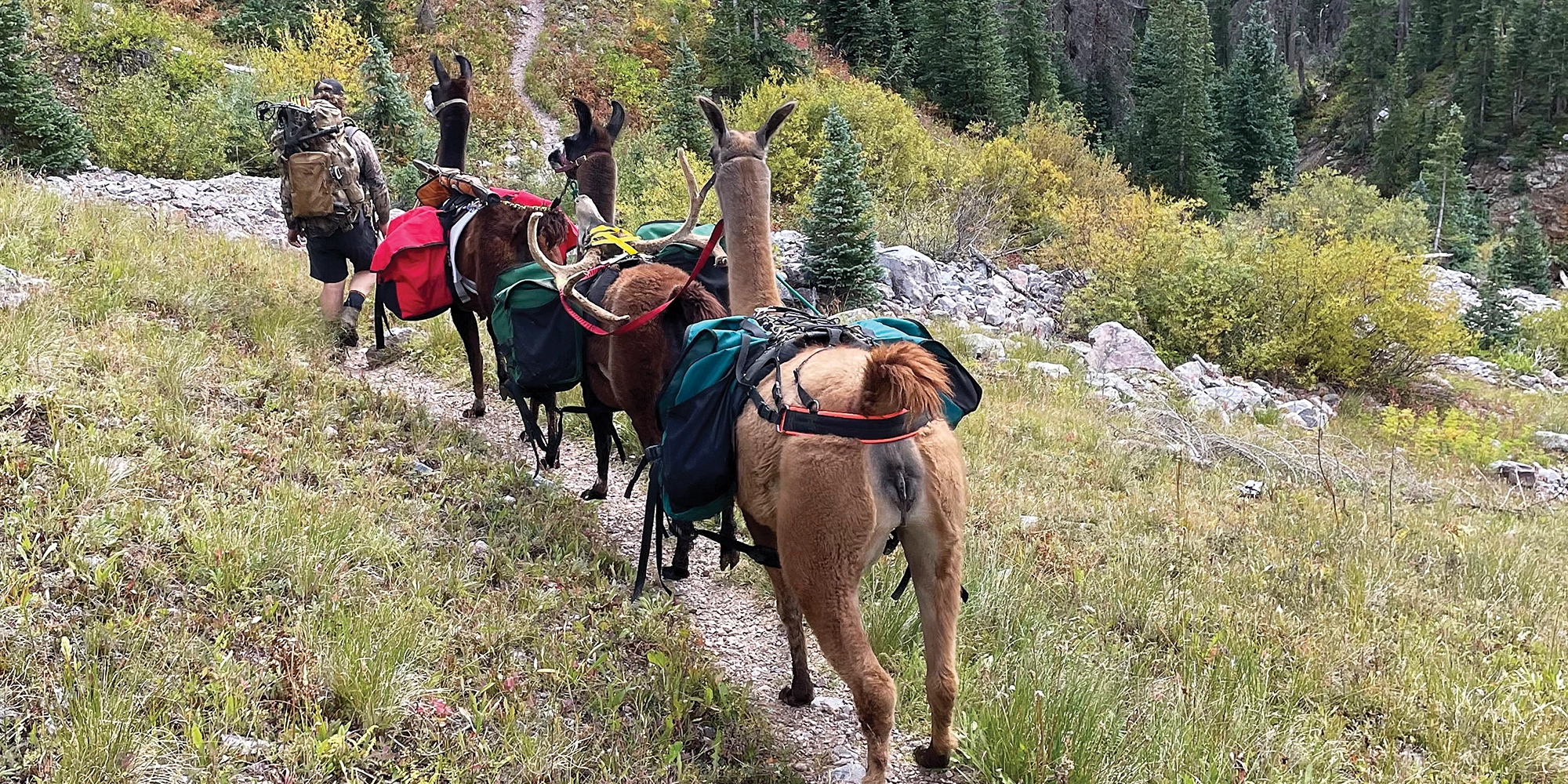
Llama-Pack Hunting
Of all the forms of passage in the backcountry, I have the least experience with llama-packing, but in 2021 my friend Mike and I embarked on essentially the exact same hunt that I described above with the horses, but in 2021, we used his four llamas. So, this hunt serves as a direct comparison to the horseback hunt in 2020. The first thing to point out is that the llamas that we used in Colorado last year were far from ideal, certified male pack llamas.
Mike’s llamas are misfit females that he’s acquired through hosting a sort of salvage farm for llamas that would have otherwise been destined for the glue factory. Mike had never before taken these llamas on an adventure this long or hard and for the most part, they performed extraordinarily. They performed so well, in fact, that I can’t even imagine how good it would be to have certified pack llamas on a trip.
The only issue we faced the entire hunt was the conditioning of the llamas’ footpads. Llamas don’t have hooves like horses, and Mike’s harem of misfit females wasn’t bred to have the most durable and tough feet. The sheer number of miles that we walked in Colorado over technical, rocky terrain really wore on these llamas’ feet. This issue forced us to stop and rest several times, especially toward the end of the hunt. It’s important to point out that this would have been a nonexistent issue with male, certified pack llamas. If it wasn’t for this one issue, I dare say the trip went perfectly.
No Llama Drama
Using pack llamas on the trip in 2021, I was able to essentially pack the exact same way I had the previous year with the horses. I carried my more comfortable sleep system, heated shelter, better food, and extra clothes. Having these extra “creature comforts” goes a long way to improving the morale on a long hunt. Essentially, the only difference from a packing standpoint from the 2021 trip compared to the 2020 trip was having to hike in with the llamas versus riding a horse. Riding a horse in 17 miles in 2020 sure was nice, but hiking in with little weight on my back in 2021 wasn’t horrible, either.
One big positive about hiking versus riding is that it is much less stressful. It is nice to hike in without the general feeling of uneasiness that I get when I hunt with horses in technical areas. I’m constantly worried about bumping my weapon when I ride a horse, whether it’s a bow, rifle, or muzzleloader. Also, as I said before, trail rodeos are constantly in the back of my mind when riding in technical terrain, and they are very intimidating and dangerous. There really is no threat of a dangerous trail rodeo with llamas, and this is a big positive for me.
The other major benefit is we never had to unpack the llamas to get through tight places, nor did we have to cut out deadfall because the llamas were way more nimble off-trail. We were able to camp at a high mountain lake in 2021 that would have been impossible to get to with the horses in 2020. Now, I will say that in 2020 when I rode in, I was much better rested for opening morning versus hiking in in 2021, but I think I have resolved this concern. When using llamas this deep, it’ll be my plan in the future to go in two days prior to the opener, thus allowing a resting/scouting day before the big show.
More Sleep is Magical
The biggest advantage that llamas present over horses is their self-sufficiency at camp. This concept absolutely blew my mind last year. First off, llamas require way less food and water than horses. This allows you to camp in more places, specifically higher up on ridges. Secondly, llamas do not need to be highlined while unattended like horses do.
At camp, llamas are generally staked out on a long leash, allowing them to feed at night and while you are out hunting during the day. As long as you clear the area of any debris, llamas do a great job of managing their leashes. Because llamas are more self-sufficient, you don’t have to wake up early and stay up late allowing them to feed like you do with horses. This means more sleep, and to a sleep-deprived hunter, more sleep is magical.
Learning for the Future
On this hunt, my friend Mike and I killed two mature bucks. The four llamas we had were more than enough to get camp and meat out in one trip. Certified male pack llamas can carry 70 pounds of loose gear and typically, they can carry more weight in meat than this because it's denser and stays closer to the body. Obviously, if we would have killed two bucks and two bulls we would have needed to make two trips with the llamas. A hunter with two good llamas can pretty much get a mature bull elk out of anywhere, but a buck and bull would have been too much. So, horses have a clear advantage in packing really heavy loads, simply because of their size and strength.
Based upon my experience over the past several hunting seasons and knowing the big advantages of llama-pack hunting versus horseback hunting, for the hardcore, DIY hunter wanting to go in deep, I highly recommend using llamas. What I learned last year is that llamas are incredibly efficient (require little food and water), very manageable for first-time users, and are extraordinarily self-sufficient.
Moving forward, I plan to do A LOT more llama-pack hunting. The biggest thing I learned to apply for future hunts is to possibly plan on a rest day between packing-in and opening day if the pack-in is really arduous (since you aren’t riding). The other learning point from last year is to be cognizant of the llamas’ feet, but honestly, this is probably a non-issue with male, certified pack llamas.
How You Can Use Llamas: Renting!
Now, I realize that not everyone owns or has friends that own llamas or horses, but llamas are so easy to safely manage in the backcountry that I think they are very worth renting for big adventures. Based on such a positive first experience last fall, I plan to rent pack llamas for future hunting adventures. I’ve done a lot of research and have figured out a good renting service near me that’s pretty centrally located in the West.
During my hunt with Mike last fall, I quickly noticed that the best llama tackle Mike owned was from a llama rancher named Mason Spencer. His pack saddles and panniers were leaps and bounds better than the other tackle Mike had. Mason runs Wasatch Front Llamas. He both makes and sells llama tackle and rents llamas to the public. Since getting back from this hunt, having piqued my interest in llamas, I’ve reached out to Mason several times to talk about his llama ranch. Toward the end of 2021, I made a trip down to Mt Pleasant (about 1.5 hours south of Salt Lake City) to visit his ranch and see his llamas firsthand.
Mason has 12 packing males, eight females, and several young males in training. The first thing I noticed was the size and body build differences between the males and the females. Male, certified pack llamas are just built way differently than the misfit females we used in Colorado last year. They are bigger, thicker, and tougher. It’s easy to see that they will handle the rocky terrain better than the misfit females did last year. Mason has done a tremendous job breaking and training his llamas. All of his llamas were very docile around me (humans), followed commands well, and were very well behaved in a pack string. I am really excited to use his llamas this coming fall, I have no doubt that they will be great in the backcountry.
Conclusion
I think each form of passage in the backcountry has its time and place for “hunting smarter.” Sometimes, backpacking is the only option because of a lack of water. Horses are tremendously useful, specifically on elk hunts where you expect to kill multiple bulls and have to pack a ton of meat. The trouble with horses for the DIY hunter is they aren’t really accessible. Horses and mules are so big and strong, I’d hesitate to take rented horses into the formidable backcountry.
Working with a reliable outfitter to do a drop camp and pickup is definitely a viable option for using horses. This can be expensive and doesn’t allow you to move basecamps, but it may be your only option. Llamas are incredibly capable in the rugged backcountry and are easy to manage for first-time users. Because of this, I believe they are the best option for the hardcore, DIY hunter to take a deeper plunge on his/her next big adventure.



